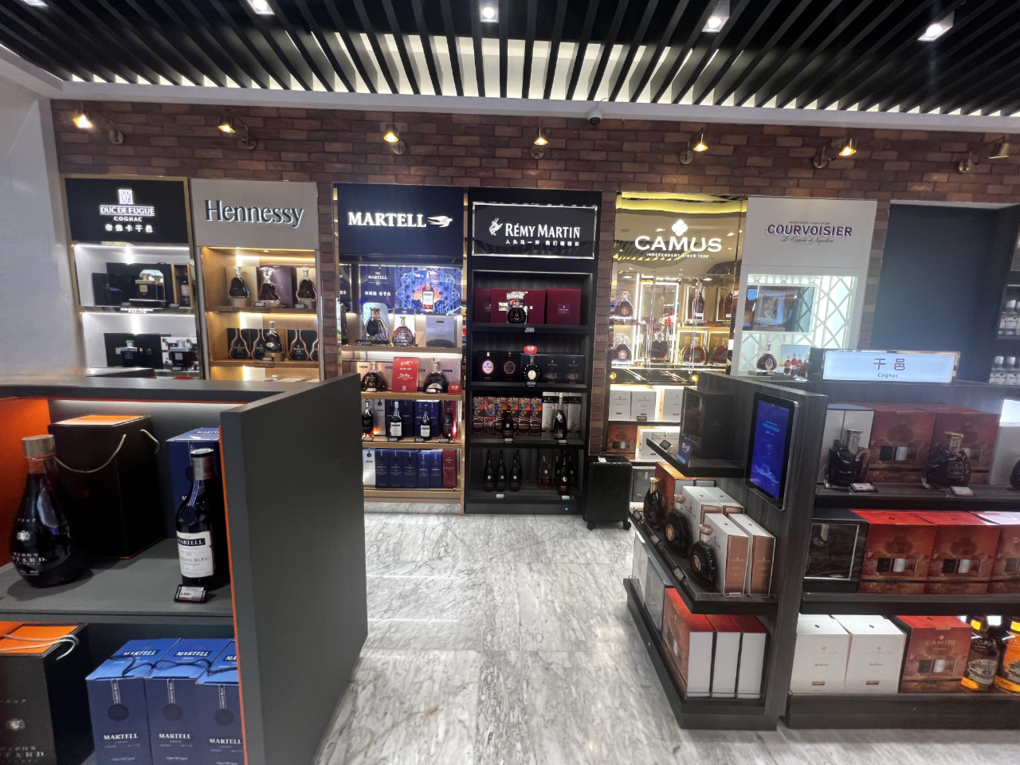 Introduction: The Moodie Davitt Report is pleased to feature the latest edition of a new guest column in association with Voiceback Analytics, a company based in Bengaluru, India, which works across a combination of three diverse specialties – market research, operations and technology – to solve business problems and find avenues for growth.
Introduction: The Moodie Davitt Report is pleased to feature the latest edition of a new guest column in association with Voiceback Analytics, a company based in Bengaluru, India, which works across a combination of three diverse specialties – market research, operations and technology – to solve business problems and find avenues for growth.
“Macbeth! Macbeth! Macbeth! Beware Macduff. Beware the thane of Fife.”
“For none of woman born shall harm Macbeth.”
“Macbeth shall never vanquished be until Great Birnam Wood to high Dunsinane Hill Shall come against him.”
(Act 4 Scene 1), Macbeth by William Shakespeare
Voiceback Analytics FactfileVoiceback Analytics is focused on providing Data Analytics-based solutions to business problems. As a Gold Partner of Microsoft for Data Analytics, Global Partner of Microsoft for AI-ML & Solution Partner of Power BI, the company claims to operate the most advanced analytics available today.
“We get the data to speak”The company embodies a powerful combination of three diverse specialties – Market Research, Operations and Technology to solve business problems and find avenues for growth. The company has combined its 15-year history of Market Research & analysis with latest Data Management and Analytics Techniques to provide solutions to complex business problems. Please visit www.voicebackanalytics.com for more details on existing customers and case studies.
Voiceback Analytics Managing Director Manishi Sanwal (above) is a leading retail & marketing professional with an extensive experience in brands and retail. He has operated in various leadership roles with LVMH group in India and China. Previously, he was the CEO of Flemingo Group, India’s biggest duty free retailer and Managing Director of DFS Group’s India operation. He is an engineering graduate from IIT, BHU, Varanasi & MBA from IIM Ahmedabad, India and can be contacted at manishi@voicebackanalytics.com |
Just like Macbeth, all of us could occasionally do with a witch to foretell the future. But anyone who was has read Shakespeare’s epic work fully understands equallay that while the witches do foretell the future they invariably push those involved toward a wrong path of death and destruction.
Fortunately, for us data does not.
Data-Driven and Data-Led
When the clouds gets darker and the waters get choppy, the captain of the ship far out to sea can do little but hope for a improved weather forecast.
The business environment of today is choppy and in places much rougher. Travel retail has been one of the sectors worst affected by COVID. As the world opens and travel demand increases, the resultant interlinked challenges threaten to turn into a perfect storm for the industry. We now face visa issues due to long wait times; rocketing air fares due to reduced flying capacity; and a shortage of inventory – either product or packaging or simply a lack of shipping containers to move goods around.
Add in the complications of contracting GDP in the US market and a high employment rate. Even the most renowned economists are not sure if it’s a slowdown, a recession or something new?
As you fix one problem, the pressures simply shift to a new one. As growth scales back, inventory planning and availability may become the biggest impediment to sales and profitability gains. Travel retail is still recovering and remains some distance away from the peak it achieved in 2019.
Despite the reduced customer demand (in total terms compared with pre-pandemic times), product shortages and inventory planning have become a critical focus area. Ensuring satisfactory continuance of supplies of products requires an ability to forecast your business for the next six months to a year.
This article addresses keyt technologies and algorithms which can be used to better control future supplies.
The importance of inventory
Inventory planning is a rare variable of store profitability which a duty free retailer can directly influence and control. Other key variables such as store rent and store traffic are to varying degrees beyond the influence of operators.
Here are a few scenarios and reasons which make inventory planning and buying mission critical:
• Buying happens to match business forecasts. The sales forecast governs the brand and product range, planogram and even the marketing and promotions being planned on the floor.
• Travel retail is a high-margin business. The money the retailere loses on a lost sale can at times be 50% or more of the sales value.
• Lead times are long due to the movement being sea freight led. Products are either voluminous or heavy and moving them around via air freight can take valuable points out of marketing
• Customer loyalty is usually brand led. Not having a brand on your shelf for even a short amount of time can result in permanent loss of the customer as he/she may shift their buying to the destination airport.
Data Analytics and Inventory
The big cornerstones of modern-day data analytics are a) capability to consume data in real time and b) capability to process big volumes and great detail in data.
These two can be effectively used to improve product availability for your customers.
Rule of Averages
A simple and effective way is to create a forecasting model which calculates historical averages of sales by each product.
The model creates a calendar which categorises each date around parameters such as day of the week, festival holiday, annual seasonality, special travel events, promotions etc. This calendar is used to calculate average sales for each combination based on past data.
This average of historical data is used to forecast future consumption. The model being used in multiple situations takes cognizance of uplifts which multiple factors such as holiday seasons, New Year celebrations, school holidays, and marketing campaigns drive. The model relies significantly on substantial computing power and generates continuosly updated data for any time period.
Traffic forecasts
Voiceback Analytics & tRetail Labs leverage a partnership with RateGain (https://rategain.com) and utilise travel ticket data to generate a continuous forecast of arrivals into an air terminal for up to 90-day periods.
These algorithms, which are successfully leveraged by large hotel chains to plan their occupancy and rates, are now being used in the travel retail industry for supply chain planning. They continuously look at actual air bookings and macroeconomic parameters such as political events and generate a forecast of passenger traffic for the upcoming periods.
This forecast is available by city (arrivals) and by airlines. The data set when combined with historical passenger spends by airlines can create a precise forecast at product or item level for the next 90 days of business. The historical sales data along with future forecasts is all fed into a beautiful intuitive report which analyses the past as well as giving precise revenue and inventory forecasts.
We have used queuing theories and Poisson distribution to create a model which predicts the maximum number of pieces which can be sold in a particular period
Quantity Planning
After being given an indication of future traffic, the buyer still has to decide on the range and quantity of each product. In high-value categories such as luxury watches, premium cosmetics, upscale spirits & wines and fashion, range planning is tricky and mistakes are expensive.
The buyer must invest capital into inventory and struggle with the delicately nuanced question of whether to keep 15 items or 25 items of a particular watch or a particular cosmetics sku. Keeping more than required products of a single item consumes capital and leads to aging and loss of inventory value. Conversely, keeping sub-requirement product volumes leads to stock-outs and loss of profit.
We have used queuing theories and Poisson distribution [probability distribution that is used to show how many times an event is likely to occur over a specified period – Ed] to create a model which predicts the maximum number of pieces which can be sold in a particular period.
The model can be run on a design or on a product or a price range and will predict the maximum possible sales of the item in a month, a week, or a day. This model can effectively be used to create the optimum order amounts as well as shelf planning for a shift.
The model dwells on advanced statistics and can deliver up to a 95% success rate. The model redoes the buying process and cuts down on both lost sales and unsold inventory.
Demand Sensing
We have previously in this column touched upon demand sensing. Sensing is often used to predict the short-term future based on the short-term past. The concept works on the basis that if the past is a good way to ascertain the future, then the very near past is a better way to ascertain the very near future. Demand sensing algorithms can be used to plan the month ahead and match your demand to arriving supplies.
A stock-out of a key brand in one airport will affect other connected airports as well as other competitive product lines in the original airport
The Road Ahead
Inventory planning is a critical component of the travel retail business and the current situation will not stabilise for some time. The presence of multiple products across stores ensures that a disturbance of one brand affects others due to the interlinked nature of business.
For example, a stock-out of a key brand in one airport will affect other connected airports as well as other competitive product lines in the original airport. It means the goal posts are constantly moving and each time you solve one problem, another tends to crop up. The capability therefore to analyse a lot of data expertly and quickly will be a key determinant of success in a deeply challenging market.
For more details contact manishi@voicebackanalytics.com












